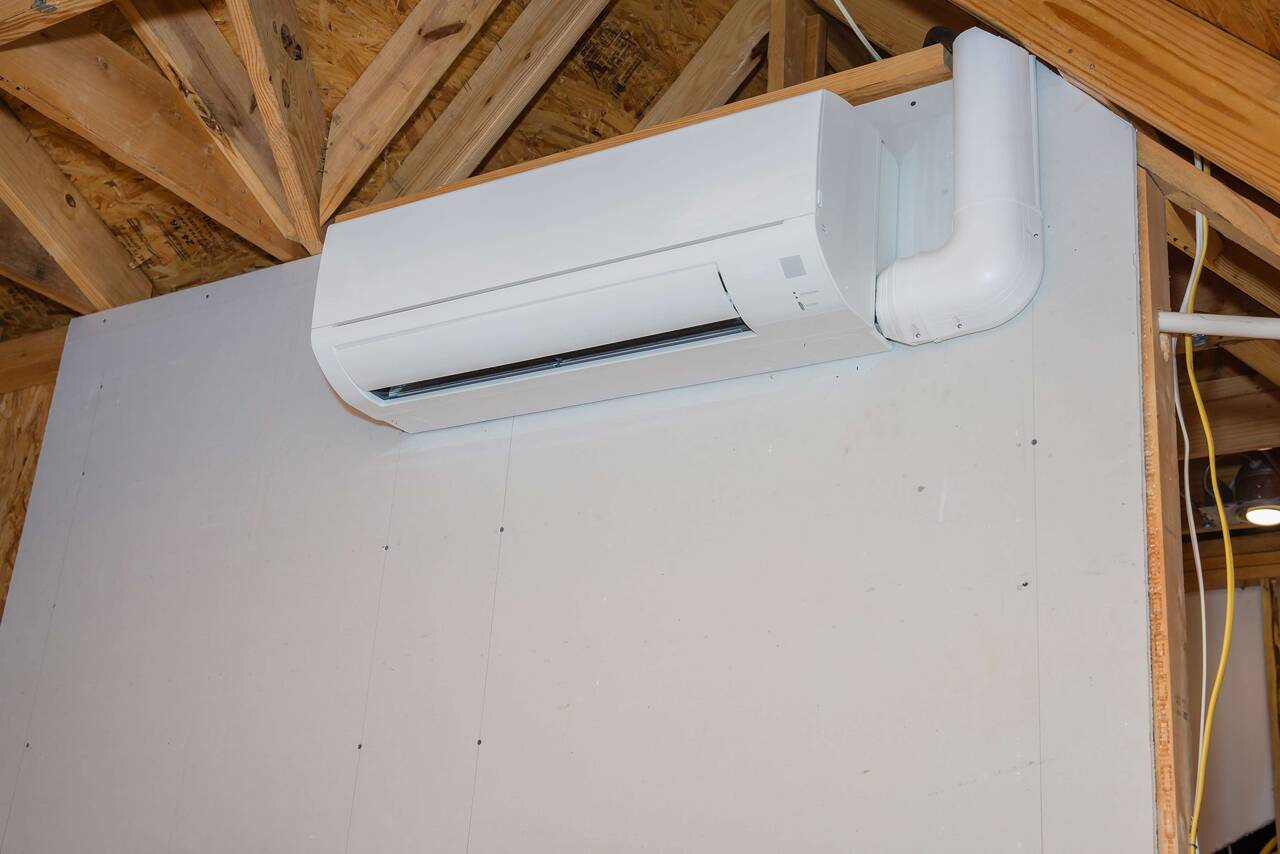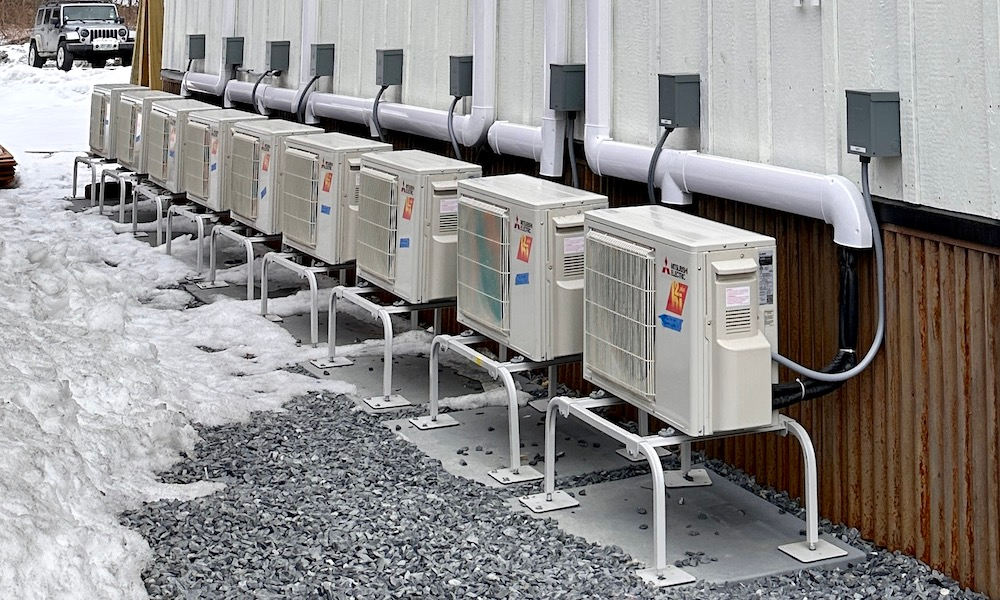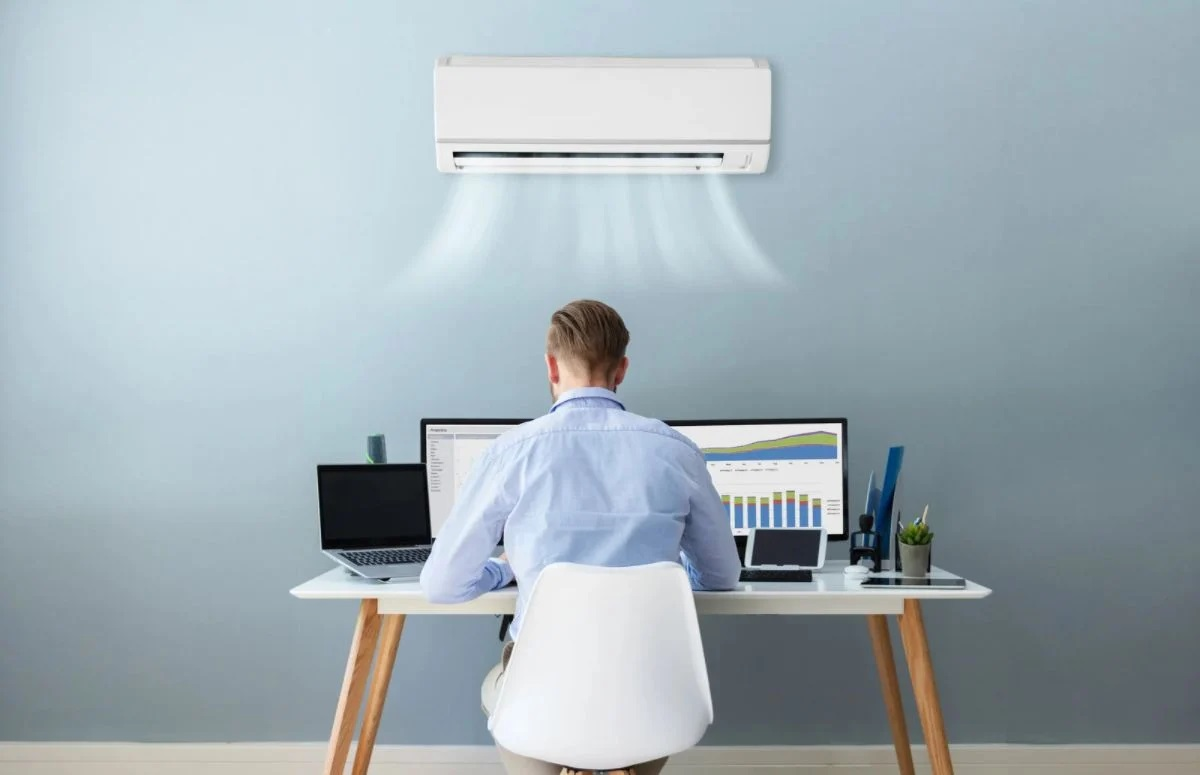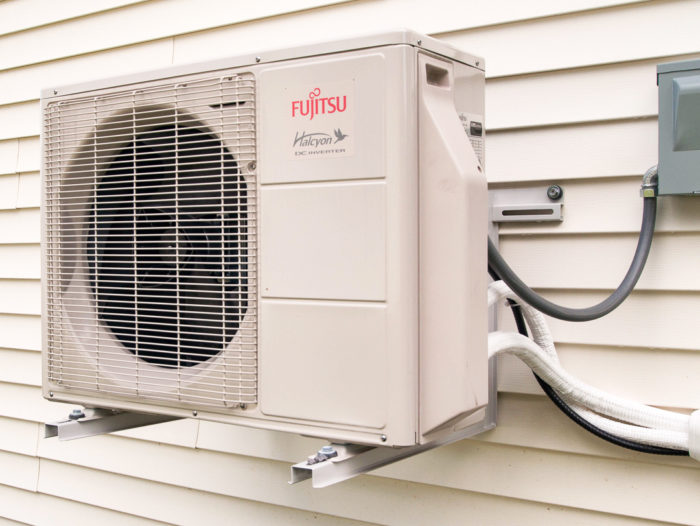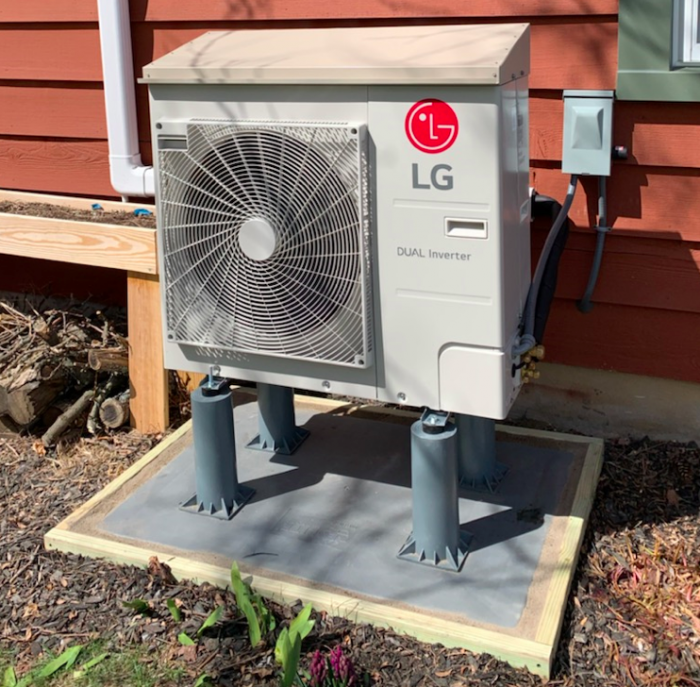Heating and cooling homes involve various types of HVAC equipment, including ductless mini split air conditioners, which are increasingly common among homeowners thanks to their flexibility and energy efficiency. Even though the electricity consumption of air conditioners is known to be relatively high, mini splits are touted to consume less electricity than central air conditioners. So, how much electricity does a mini split use?
Central air conditioning units operate similarly to mini-splits. These types of systems consist of an outdoor condenser that is then connected to an indoor unit by refrigerant lines. The outside unit draws refrigerant inside, through the condenser coils to cool the air inside the house. While mini split air conditioners are energy saving, this operation still calls for ample energy to function.
In this article, you will learn how many watts per hour a mini-split uses, what influences the electricity consumption of mini-splits, and how to reduce its consumption.
How Much Electricity Does a Mini-Split Use?
Image Source: grainger.com
The total amount of electricity a mini-split system consumes will depend on its energy-efficiency ratings and cooling capacity. Most models for rent range from about a 9000 BTU (British Thermal Unit) cooling capacity that consumes about 500 to 700 watts of electricity in an average room. A 12000 BTU AC electricity usage can be approximately 1000 watts, while a 48000 BTU unit can consume up to 5500 watts per hour. Energy consumption of a mini split depends on the time of the year, where during the summer or winter period, the consumption is much higher than the approximations.
Mini Split Electricity Consumption Calculation
If you have access to the specification data sheet for your mini-split system, you can find its power consumption. First, you need to determine how many watts your mini split uses.
Mini-split wattage depends on two factors:
- Cooling or Heating Capacity (denoted BTU or tons). Typically bigger mini-splits will use more watts.
- Cooling or Heating Efficiency (determined by SEER and HSPF rating, respectively). Mini-splits with higher SEER ratings use fewer watts when cooling, and mini-splits with higher HSPF ratings will use fewer watts when heating.
You can use these factors to calculate how many watts your mini split uses using this formula
Average Cooling Watt Usage = Mini-Split Capacity (BTU) ÷ SEER Rating
For instance, a 9000 BTU 18 SEER mini split will use;
9000 BTU ÷ 18 SEER = 500 watts
This formula also applies to heating watt usage.
Average Heating Watt Usage = Mini split capacity (BTU) ÷ HSPF rating
Therefore a 9000 BTU 10 HSPF split will be used;
9000 BTU ÷ 10 HSPF = 900 watts
The amount of electricity used is measured in kilowatt-hours (kWh)
Mini split electricity usage = (Watts x Hours) ÷ 1000
Therefore, a 9,000 BTU 18 SEER mini split will use:
500W x 1 Hour =500 ÷ 1000 = 0.5 kWh per hour
Suppose you run your mini-split for 24 hours per day. In that case, your 9000 BTU will use:
0.5 kWh x 24 Hours = 12 kWh per day
And your monthly mini-split energy consumption will be
12 kWh x 30 days = 360 kWh
How Much Does it Cost to Run a Mini Split Air Conditioner?
Image Source: energyvanguard.com
Knowing how much it will cost you to run your mini-split heat pump depends on how much energy your mini-split uses and your local electricity rate. Taking an average electricity price of $0.15 per kWh, running a 9000 BTU mini split for 8 hours per day will cost:
Mini split running cost = Energy usage in kWh x Price of electricity
Running 9000 BTU 18 SEER per day will be;
12 kWh x $0.15 = $1.80 per day
Therefore the monthly cost will be the cost per day multiplied by 30 days
$1.80 x 30 days = $54 Or 360 kWh x $0.15 = $54
Factors Affecting Mini Split’s Electricity Consumption
Image Source: attainablehome.com
1. Difference between the Outdoor Temperature and Set Temperature
The higher the difference between the outdoor temperature and the mini split’s temperature, the harder the air conditioner must work to maintain a comfortable indoor temperature, hence consuming more energy.
2. Size of Your Home
The larger the space that needs to be heated or cooled, the more electricity is required.
3. Quality of Home Insulation
Better insulation results in lower energy losses, hence less electricity required to maintain the indoor temperature.
4. Efficiency of Your Unit
Another feature of mini-split systems is that those with higher efficiency ratings will consume less energy to deliver the required cooling or heating or cooling.
5. BTU (British Thermal Unit) Rating of the Air Conditioner
This is the unit’s size or its heating or cooling capacity, usually measured in British Thermal Units, BTUs. The higher the BTU rating, the greater the capability to heat or cool, normally in conversion to energy use.
6. Frequency and Duration of Usage
It is one of the reasons that affect the flow of electrical energy in almost all electrical appliances that are in use frequently. It is more energy-consuming if you use your mini-split unit during the day and leave it off at some other time. However, new models have incorporated a timer to change temperature settings to a low-power status or even power off the device.
7. Condition of the Unit
Compared to new mini-splits, the older models are inefficient in the use of energy. An older mini-split air conditioner can start to use more electricity because many of the parts have failed or become less efficient as they age. In addition, the ones that are not maintained usually consume more power than the units that are properly maintained.
How to Minimize Mini Split’s Electricity Consumption
Image Source: greenbuildingadvisor.com
1. Use the Appropriate Size Mini Split Unit
Similar to any quiet HVAC system, it is crucial to get the unit properly sized. When you choose a mini-split system that has a capacity that is lower than that of the space, then the system will work harder. This may not merely bring a shorter life to the system, but it may even fail to generate enough cool or warm air. On the one hand, if the system is too large, it will not operate effectively, leading to short cycling, poor humidity management, and increased energy consumption and bills.
Proper sizing involves considering the size of the room you want to heat or cool, the level of home insulation, layout, and design, and the number of people in the room, among other factors.
2. Maintain Mini Splits Regularly
Minisplit maintenance is very important so that the device will function well all throughout this year. If a mini-split unit is effectively maintained, it will work economically, minimizing energy losses. Here is a simple checklist for mini-split maintenance
- Mini split air filters need cleaning or replacement every 4-6 weeks. A dirty filter makes the unit work harder to pull in air, which increases energy consumption and reduces efficiency.
- Condenser coil cleaning in mini-split outdoor unit needs attention every 4-6 weeks. Before cleaning, power off the system and wait one hour for cooling. The condenser coil is located in the outdoor component.
- Keep the area surrounding the mini split unit clean. Ensure there’s nothing close to the outdoor or indoor mini-split unit that can potentially block airflow.
- Ensure proper drainage. The mini-split evaporator collects condensation through suction tubing as the warm air goes through a return filter. Check that the outdoor unit is designed to drain.
- Have an HVAC professional service your equipment at least every two years.
3. Select an Energy-Efficient Model
If you are determined to keep energy consumption at a minimum, you should consider investing in an energy-efficient mini-split unit. There are two efficiency ratings for air conditioners, including mini splits.
a) Heating Season Performance Factor (HSPF)
The heating efficiency of a mini split heat pump is described by the HSPF (Heating Season Performance Factor). HSPF measures the total heat provided by the unit (in BTU) divided by the total electricity used by the unit (in watt-hours).
An HSPF factor of 8.5 is considered efficient and is the requirement for a unit to qualify for an Energy Star qualification.
b) Seasonal Energy Efficiency Ratio (SEER)
Seasonal Energy Efficiency Ratio (SEER) is an efficiency rating for air conditioners and mini splits operation in the cooling mode. SEER is the total heat removed from the space (expressed in BTU) divided by the total electricity used by the unit (measured in kWh). A SEER rating of above 15 is considered efficient and a requirement for an Energy Star certification.
Mini split air conditioners that are Energy Star-certified are likely to use less electricity than non-certified models. Also, older models may have efficiency ratings between 7 and 10, while newer models have efficiency ratings up to 50. So be sure to look for Energy Star qualification and higher efficiency ratings when browsing mini-split systems.
4. Use Energy-Efficient Home Upgrades
The condition of your home significantly impacts the energy efficiency of any HVAC equipment, including mini split heat pumps. Properly insulate your home and install energy-efficient windows and doors to ensure warm or cool air doesn’t escape. Also, ensure that there are no interior or exterior wall openings.
Frequently Asked Questions on Mini Split’s Electricity Consumption
Image Source: greenbuildingadvisor.com
1. How much electricity does a mini split use per day?
Averagely, a 9,000 BTU system has an energy consumption ranging from slightly below 4 kWh to less than 15 kWh per day. Other mini-split units in the 24,000 to 36,000 BTU range use about 40 kWh to 90 kWh per day.
2. Should I turn my mini-split off at night?
Unlike traditional, ducted systems, you should always keep your mini split system on to optimize its lifespan and energy efficiency. Turning it on and off causes short cycling that can be costly due to the long start-up times of these systems, leading to more energy consumption than letting them run.
3. Do ductless mini-split systems use a lot of electricity?
Mini-splits are an energy-efficient and cost-effective way to heat or cool your home. These units transfer rather than generate heat, and they allow you to select the specific rooms you want to heat or cool. This means that instead of turning on the central air conditioners which adjust the entire house’s temperature, you can only heat or cool the rooms you use.
Final Take
A mini-split heating and cooling system could be an efficient alternative to central air conditioning and heating systems. The average mini-split system consumes a fraction of larger AC systems’ electricity. This is one of the reasons why you should consider having mini-split air conditioners. You can get an approximate estimate using the technical information on the specification sheet for your mini-split heat pump.
Still, how much electricity a mini-split system uses depends on several factors, including the model of the system, frequency of use, the set temperature, and its condition. Choosing an energy-efficient unit is an excellent way to keep electricity usage low. Also, keeping your mini-split filter clean is a great way of reducing energy consumption.


